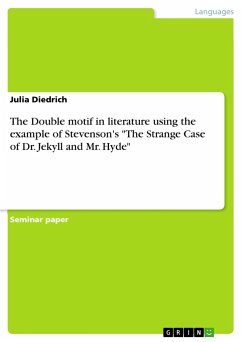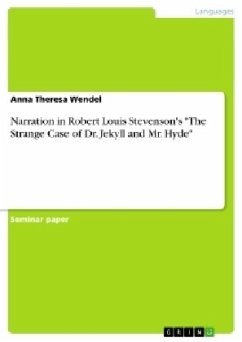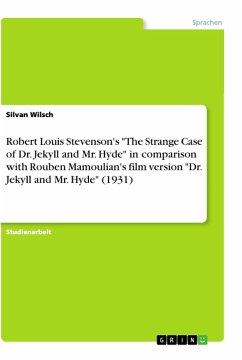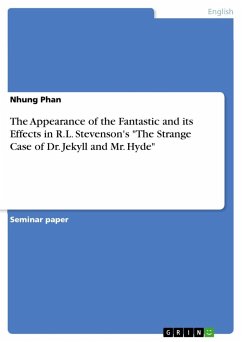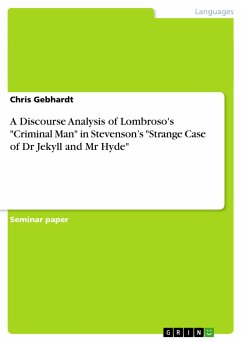Seminar paper from the year 2009 in the subject Didactics - English - Literature, Works, grade: 1,3, Ernst Moritz Arndt University of Greifswald (Anglistik/Amerikanistik), course: Psychological Approaches to British Fiction, language: English, abstract: Since the early beginning of literature the double motif has served in its different models to trace the features of the ego, individuality and perception. The double plays an important role in literature: it portays confusion and transformation, reflects inner desires and spreads anxiety. But the phenomenon is not just an invention of literature. Again and again people claim to see oneself like some famous persons such as Catharine the Great and Johann Wolfgang von Goethe. This term paper will analyze the Double-motif in Robert Louis Stevenson's novel The Strange Case of Dr. Jekyll and Mr. Hyde with regard to psychoanalysis. While citing secondary literature it became obvious that a good portion of these examinations use psychological criteria which offer a wider range of insight into the oddly logic of Stevenson's text which he to no purpose named The Strange Case. Three texts from Freud lend themselves to work with the novel: "Die 'kulturelle' Sexualmoral und die moderne Nervosität" (1908), "Das Unheimliche" (1919) and "Das Unbehagen in der Kultur" (1930). In "Das Unheimliche" Freud deals with the background of the double motif. He interprets the phenomenon from its probable beginning in mythology till the masterly usage of it in E.T.A Hoffmann's "Sandman".In section two of this term paper I will give an overview of the double motif in literature. For this, I will explain the development of the term and its psychological implications. The third section will constitute the main part of the paper: I will first discuss two moments which can be interpreted with the help of psychology and then I will try to apply Freud's theorems to the primary source which is full of repressed drives and desires.

